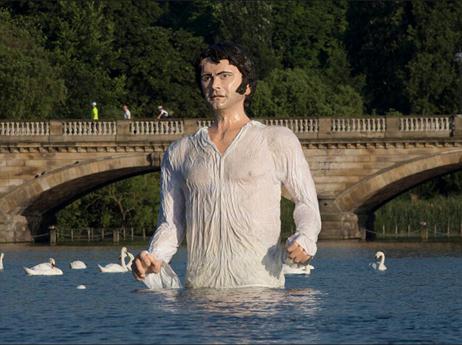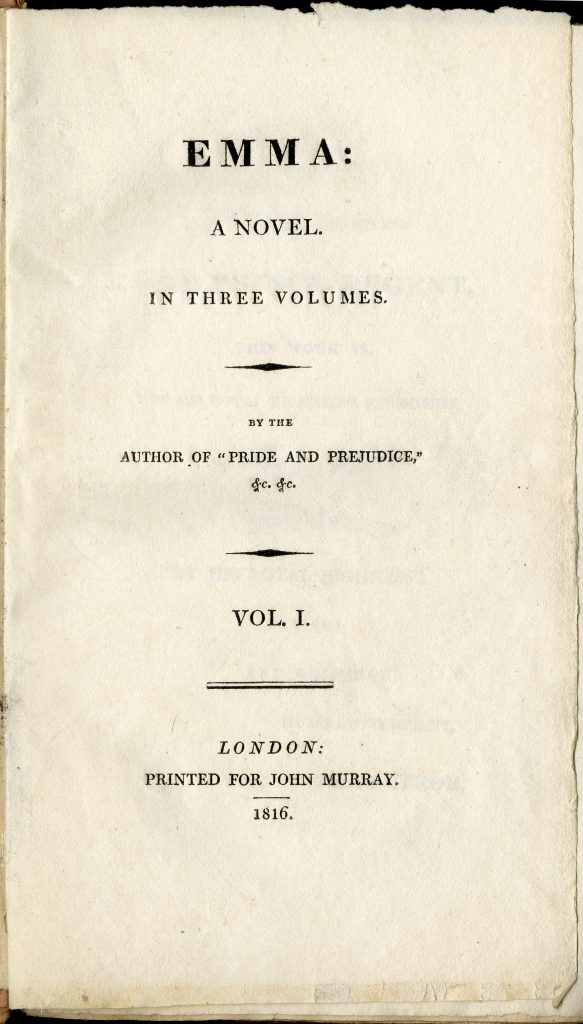**
Tuesday, September 5th
Austen, Pride and Prejudice, Volume 3 (227-335)
Appendix E: Domestic Tourism (383-387)
How rich was Mr. Darcy? A BBC “More or Less” podcast: http://www.bbc.co.uk/programmes/w3csvq3g
Presentation:
What did Pemberley and other great estates look like? / Gabby Gruszynski
Daytime Fashion in the early 1800s / Hailey Teasley
Thursday, September 7th
Pride and Prejudice film adaptations
Excerpts from Helen Fielding’s Bridget Jones’s Diary, Penguin Books, 1996: Scene just after Bridget and Mark’s first conversation (12); two passages associated with the 1995 BBC Pride and Prejudice(215-216)
Pride and Prejudice. Directed by Simon Langton, dramatized by Andrew Davies, performances by Colin Firth and Jennifer Ehle, BBC Television and BBC Worldwide Americas, Inc., 1995. (5 hours and 23 minutes)
Bridget Jones’s Diary. Directed by Sharon Maguire, screenplay by Helen Fielding, Andrew Davies, and Richard Curtis, performances by Renee Zellweger, Colin Firth, and Hugh Grant, Miramax and Universal Pictures, 2001.
Bride and Prejudice. Directed by Gurinder Chadha, screenplay by Jane Austen (novel) and Paul Mayeda Berges, performances by Aishwarya Rai Bachchan and Martin Henderson, Pathé Pictures International and the UK Film Council, 2004.
Pride and Prejudice. Directed by Joe Wright, screenplay by Deborah Moggach, performances by Keira Knightley and Matthew Macfayden, Focus Features, 2005. (2 hours and 9 minutes)
**
Tuesday, September 12th
Baker, Longbourn (pp. 1-214)
Presentations:
Working-class women and their labor/ Cassidy Cheatwood
Evening Fashion: what to wear to the ball? / Carmen Kirkconnell
I think of Longbourn — if this is not too much of an aspiration — as being in the same tradition as Wide Sargasso Sea or Rosencrantz and Guildenstern Are Dead. It’s a book that engages with Austen’s novel in a similar way to Jean Rhys’s response to Jane Eyre and Tom Stoppard’s to Hamlet. I found something in the existing text that niggled me, that felt unresolved, and wanted to explore it further. That was the pull for me, that sense of unresolvedness* — I can’t really speculate on what it was for other writers: I’m afraid I don’t know the other fictions around Austen’s work terribly well at all.
The unresolvedness for me was to do with being a lifelong fan of Austen’s work, but knowing that recent ancestors of mine had been in service. I loved her work, but I didn’t quite belong in it — and I felt the need to explore that further.NPR INTERVIEW WITH JO BAKER
Thursday, September 14th
Finish reading Longbourn
Presentation:
Austen Sequels and Retellings: a publishing industry / Bekah Rooks
**
Tuesday, September 19th
Zoboi, Pride (Chapters 1 through 19)
Thursday, September 21st
Pride (Finish Novel)
Presentation:
Young Adult Fiction and Jane Austen / Emily Copp
**
Tuesday, September 26th
First Semester Exam (description)
Thursday, September 28th
Emma, Volume I, Chapters I through V, (55-82)
Appendix A: Austen’s Correspondence with John Murray and James Stanier Clarke (407-411)
Presentation:
The English Village during Austen’s time / Will Babcock
Illness and Medicine in Austen’s Time / Emily Chopra
**



